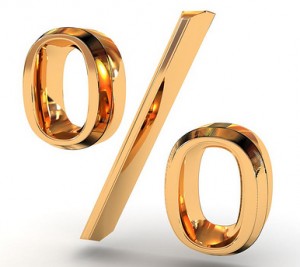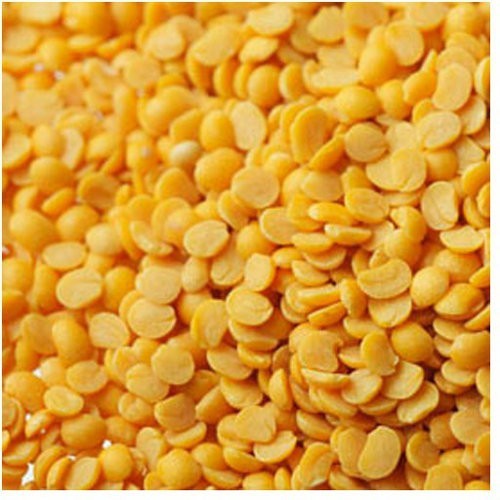
Last week the Reserve Bank of India (RBI) released the data on the performance of non-financial private corporate business sector during the second quarter of 2015-16 (July- September 2015). This data makes for a very interesting reading.
The data aggregates the financial results of 2,711 listed nongovernment non-financial companies during the period July to September 2015. Take a look at the following table which summarises the performance of the companies. Also, please keep in mind that “to compute the growth rates in any quarter, a common set of companies for the current and previous period is considered.” This has had to be done because the number of companies across quarters does not match. So while 2863 companies have been taken into account for July to September 2014 results. Only 2,711 companies have been considered for the period July to September 2015.
| Indicator | July to September 2014 | April to June 2015 | July to September 2015 | |||
|---|---|---|---|---|---|---|
| Amount in Rs billion | Year on year growth in Per cent | Amount in Rs billion | Year on year growth in Per cent | Amount in Rs billion | Year on year growth in Per cent | |
| No. of Companies | 2,863 | 2,723 | 2,711 | |||
| Sales | 8,107 | 4.2 | 7,639 | -2.4 | 7,517 | -4.6 |
| Value of Production | 8,148 | 4.2 | 7,694 | -2.4 | 7,479 | -5.6 |
| Expenditure, of which | 7,076 | 3.6 | 6,534 | -3.5 | 6,330 | -7.8 |
| Raw Material | 3,760 | 3.4 | 3,199 | -11.8 | 2,994 | -18.7 |
| Staff Cost | 649 | 7.7 | 681 | 10.2 | 689 | 9.0 |
| Power & fuel | 297 | 3.7 | 284 | -3.0 | 276 | -4.2 |
| Operating Profits (EBITDA) | 1,073 | 8.3 | 1,160 | 3.7 | 1,149 | 8.9 |
| Other Income | 275 | 26.1 | 215 | 1.8 | 250 | -5.8 |
| Depreciation | 297 | 3.5 | 304 | 3.6 | 301 | 4.0 |
| Gross Profits (EBIT) | 1,051 | 14.1 | 1,070 | 3.4 | 1,099 | 6.5 |
| Interest | 326 | -0.6 | 342 | 9.5 | 333 | 8.4 |
| EBT (before NOP) | 725 | 22.1 | 729 | 0.7 | 766 | 5.6 |
| Tax Provision | 204 | 29.0 | 211 | 6.0 | 219 | 9.6 |
| Net Profits | 537 | 25.6 | 514 | -9.5 | 577 | 9.9 |
The table clearly shows that the sales of the companies during the period July to September 2015 fell by 4.6%, in comparison to the same period last year. Despite falling sales the net profits went up by 9.9%. There are a couple of important points that need to be made here.
Falling sales show that businesses lack pricing power. This is because the consumer as well as industrial demand for products hasn’t been going up at the same pace as it was in the past. Nevertheless, despite falling sales, the net profit went up by close to 10%. What is happening here? The raw material costs of businesses fell by 18.7% during the three month period in comparison to a year earlier.
As CARE Ratings pointed out in a recent research note: “The negative growth in net sales is largely attributed to weakness in demand and pricing power. Despite negative producer’s inflation as measured by the wholesale price index signalling also lower raw material costs, growth in profits do not appear to be satisfactory.”
The raw material cost during the period stood at a total of Rs 2,99,400 crore. This was Rs 76,600 crore lower. Profit on the other hand jumped by around Rs 3,900 crore during the quarter. Hence, the entire jump in profits has come from lower raw material costs.
Raw material costs have fallen largely due to falling global commodity prices. Power and fuel costs have also eased by Rs 2,100 crore. This has helped businesses bring down total expenditure by Rs 74,500 crore during the quarter and in turn, help report greater profits.
Now let’s dig a little deeper and look at how manufacturing and services companies have done.
| Indicator | Manufacturing | |||||
|---|---|---|---|---|---|---|
| July to September 2014 | April to June 2015 | July to September 2015 | ||||
| Amount in Rs billion | Year on year growth in Per cent | Amount in Rs billion | Year on year growth in Per cent | Amount in Rs billion | Year on year growth in Per cent | |
| No. of companies | 1,910 | 1,828 | 1,828 | |||
| Sales | 5,896 | 3.9 | 5,414 | -4.8 | 5,275 | -7.8 |
| Expenditure, of which | 5,270 | 3.5 | 4,732 | -6.2 | 4,534 | -11.3 |
| Raw Material | 3,374 | 3.0 | 2,882 | -13.0 | 2,697 | -19.1 |
| Staff Cost | 293 | 11.3 | 311 | 10.8 | 309 | 9.4 |
| Power & fuel | 168 | 10.5 | 164 | 2.8 | 158 | -2.5 |
| Operating Profits (EBITDA) | 649 | 7.9 | 717 | 4.0 | 699 | 11.0 |
| Other Income | 127 | 20.1 | 119 | -3.9 | 140 | 12.5 |
| Depreciation | 184 | 3.0 | 187 | 4.1 | 181 | 2.4 |
| Gross Profits (EBIT) | 592 | 12.0 | 649 | 2.4 | 658 | 13.9 |
| Interest | 188 | 3.2 | 196 | 9.4 | 182 | 4.2 |
| EBT (before NOP) | 404 | 16.7 | 453 | -0.4 | 476 | 18.1 |
| Tax Provision | 131 | 30.1 | 135 | 6.9 | 137 | 6.2 |
| Net Profits | 281 | 21.6 | 310 | -14.3 | 333 | 19.8 |
The manufacturing sector includes companies operating in Iron & Steel, Cement & Cement products, Machinery & Machine Tools, Motor Vehicles, Rubber, Paper, Food products etc. The sales of these companies have fallen by 7.8% during the three month period between July and September 2015. This shows a slowdown in industrial as well as consumer demand.
The profits on the other hand, tell a completely different story jumping by 19.8%. This was primarily on account of raw material costs falling by 19.1%, during the period. It needs to be mentioned here that for profits to continue to grow raw material costs will have to continue to fall, so that expenditure can be controlled or brought down.
For raw material prices to continue to fall, commodity prices need to continue to fall. Commodity prices have already fallen quite a lot. Hence, for profits to grow in the next financial year sales of companies need to start growing as well.
Let’s take a look at the performance of services sector which includes companies operating in Real Estate, Wholesale & Retail Trade, Hotel & Restaurants, Transport, Storage and Communication industries.
| Indicator | Services | |||||
|---|---|---|---|---|---|---|
| July to September 2014 | April to June 2015 | July to September 2015 | ||||
| Amount in Rs billion | Year on year growth in Per cent | Amount in Rs billion | Year on year growth in Per cent | Amount in Rs billion | Year on year growth in Per cent | |
| No. of companies | 465 | 454 | 450 | |||
| Sales | 701 | 8.8 | 816 | 6.8 | 799 | 7.2 |
| Expenditure, of which | 583 | 6.4 | 655 | 4.8 | 646 | 3.3 |
| Raw Material | 49 | 12.9 | 47 | 6.8 | 44 | -13.6 |
| Staff Cost | 50 | 11.9 | 55 | 8.0 | 56 | 8.4 |
| Power & fuel | 40 | 3.4 | 31 | -21.7 | 30 | -25.9 |
| Operating Profits (EBITDA) | 129 | 28.3 | 164 | 16.4 | 157 | 19.4 |
| Other Income | 64 | 61.7 | 24 | 2.9 | 43 | -33.3 |
| Depreciation | 60 | 6.4 | 68 | 6.6 | 69 | 11.2 |
| Gross Profits (EBIT) | 133 | 59.0 | 120 | 19.5 | 131 | -2.2 |
| Interest | 45 | -8.0 | 50 | 6.0 | 56 | 20.8 |
| EBT (before NOP) | 88 | @* | 70 | 31.5 | 75 | -14.3 |
| Tax Provision | 17 | -9.3 | 23 | 16.7 | 23 | 35.4 |
| Net Profits | 71 | @* | 48 | 6.6 | 47 | -33.9 |
* The ratio / growth rate for which denominator is negative or negligible
is not calculated, and is indicated as ‘$’ and ‘@’ respectively.
The sales of companies operating in the services sector have risen by around 7.2% but net profit has fallen by 33.9%. This despite the fact that raw material cost as well as cost of power and fuel has crashed. Nevertheless, this did not prevent overall expenditure from going up. This again shows that companies operating in this sector are going through tough times and lack pricing power. The consumption has still not picked up despite the RBI cutting the repo rate by close to 125 basis points since the beginning of this year.
The column originally appeared on The Daily Reckoning on December 7, 2015


 Earlier this year, the ministry of statistics and programme implementation moved to a new way of measuring the gross domestic product. They also produced some backdated data for the last few years. The red curve shows the nominal GDP growth rate as per the new method of calculating the GDP. The blue curve, on the other hand, shows the GDP growth as per the old method of calculating the GDP.
Earlier this year, the ministry of statistics and programme implementation moved to a new way of measuring the gross domestic product. They also produced some backdated data for the last few years. The red curve shows the nominal GDP growth rate as per the new method of calculating the GDP. The blue curve, on the other hand, shows the GDP growth as per the old method of calculating the GDP.
 Nafed picked up 1543 tonnes of tur dal in 2014-2015. The total production of tur dal in 2014-2015 was around 2.78 million tonnes. The total production in 2013-2014 had stood at 3.34 million tonnes. What this tells us is that unlike rice and wheat, the government agencies are picking up very little of dal directly from the farmers at the minimum support price.
Nafed picked up 1543 tonnes of tur dal in 2014-2015. The total production of tur dal in 2014-2015 was around 2.78 million tonnes. The total production in 2013-2014 had stood at 3.34 million tonnes. What this tells us is that unlike rice and wheat, the government agencies are picking up very little of dal directly from the farmers at the minimum support price.